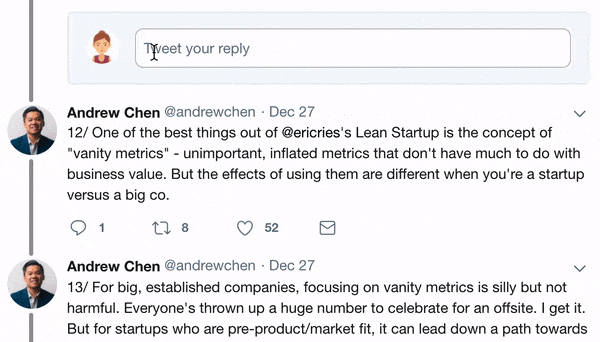
New paper in Nature Astronomy: “An upper limit on late accretion and water delivery in the Trappist-1 exoplanet system”
A thread to explain why this is new and interesting...
nature.com/articles/s4155…
1/
A thread to explain why this is new and interesting...
nature.com/articles/s4155…
1/
Impacts on planets after they form can:
-Deliver volatiles
-Erode/modify atmospheres
-Cause extinctions
-Make ridiculous movie plots (Deep Impact is my personal favorite asteroid-about-to-kill-everyone movie)
2/
-Deliver volatiles
-Erode/modify atmospheres
-Cause extinctions
-Make ridiculous movie plots (Deep Impact is my personal favorite asteroid-about-to-kill-everyone movie)
2/

In the Solar System, impact rates are measured mainly using 1) crater counts (e.g. for the Moon), or 2) highly-siderophile elements (for Earth)
3/
3/

Analyses of highly-siderophile elements find that ~0.5% of Earth’s mass came from planetesimals after the Moon-forming impact.
This is called “late accretion” – it’s one place where cosmochemists and modelers meet (image from @sethajacobson+ 2014 -- ui.adsabs.harvard.edu/abs/2014Natur.…)
4/
This is called “late accretion” – it’s one place where cosmochemists and modelers meet (image from @sethajacobson+ 2014 -- ui.adsabs.harvard.edu/abs/2014Natur.…)
4/

It would seem hopeless to try to constrain late accretion on exoplanets. No craters. No highly-siderophile elements.
But wait, there’s more…
5/
But wait, there’s more…
5/

Our idea: focus on multi-resonant systems.
These resonances are “fragile”. Their survival puts an upper limit on the perturbations they’ve felt over their system lifetimes.
(I labeled the resonances in this image)
6/
These resonances are “fragile”. Their survival puts an upper limit on the perturbations they’ve felt over their system lifetimes.
(I labeled the resonances in this image)
6/

We performed a simple numerical experiment:
Take the Trappist-1 system and determine the minimum perturbation needed to break it.
Perturbations are from ‘rogue’ bodies leftover from planet formation (as for late accretion on Earth).
7/
Take the Trappist-1 system and determine the minimum perturbation needed to break it.
Perturbations are from ‘rogue’ bodies leftover from planet formation (as for late accretion on Earth).
7/
Result 1: a rogue planetary embryo more massive than the Moon disrupts Trappist-1’s resonances.
Implication: ~Moon-mass is the most massive impactor on any planet since formation (most likely targets: planets f, g, h)
8/
Implication: ~Moon-mass is the most massive impactor on any planet since formation (most likely targets: planets f, g, h)
8/

Result 2: a swarm of rogue planetesimals more massive than 0.05 Earth masses disrupts Trappist-1’s resonances.
The resonances are narrow so it doesn’t take a big “kick” to move the planets out.
9/
The resonances are narrow so it doesn’t take a big “kick” to move the planets out.
9/

Using the statistics of impacts in our simulations we put upper limits on late accretion on each planet.
Punchline: the upper limits are tiny! They are less than Earth for 4 inner planets, similar to Earth for outer 3.
10/
Punchline: the upper limits are tiny! They are less than Earth for 4 inner planets, similar to Earth for outer 3.
10/

Since the Trappist-1 planets underwent very little late accretion, this means they formed fast, and were done growing by the end of the gaseous disk phase (consistent with migration-driven models).
Blog post on "breaking the chains" model: planetplanet.net/2017/04/18/bre…
11/
Blog post on "breaking the chains" model: planetplanet.net/2017/04/18/bre…
11/
Time zero for late accretion for Trappist-1: end of gas disk phase
Time zero for late accretion on Earth: Moon-forming impact
This means our Trappist-1 limits are – in terms of the relevant time interval – stricter than for Earth!
12/
Time zero for late accretion on Earth: Moon-forming impact
This means our Trappist-1 limits are – in terms of the relevant time interval – stricter than for Earth!
12/

Water delivery from late accretion on Trappist-1 is minimal. Upper limits are a few oceans for outer planets, much less for inner ones.
(1 “ocean” = Earth’s total surface water)
13/
(1 “ocean” = Earth’s total surface water)
13/

But do the Trappist-1 planets even have any water? We ran 5 sets of new interior+water models constrained by full data from Agol et al (2021).
None of our models finds water at >2-sigma for any of the planets. Planet g is the best candidate (see papers by @Lena__Noack+)
14/
None of our models finds water at >2-sigma for any of the planets. Planet g is the best candidate (see papers by @Lena__Noack+)
14/

Punchline: *If* any of the Trappist-1 planets has water, it must have been incorporated during formation (not from late accretion)
15/
15/

Philosophical point: our paper shows how much we can learn by focusing on what could NOT have happened rather than on what did.
media.giphy.com/media/l2JIk0sW…
16/
media.giphy.com/media/l2JIk0sW…
16/
IAU rule B5: a planet must
1.Orbit the Sun
2.Be massive enough to be round
3.Have cleared its orbit
Let’s accept 1 and 2. Our new paper demonstrates 3. So we can officially call Trappist-1 “planets”!
iau.org/static/resolut…
17/
1.Orbit the Sun
2.Be massive enough to be round
3.Have cleared its orbit
Let’s accept 1 and 2. Our new paper demonstrates 3. So we can officially call Trappist-1 “planets”!
iau.org/static/resolut…
17/
Naturally, our method is generalizable to all resonant chain systems (in progress)
Kepler-223 and TOI-178 are ideal candidates.
18/
en.wikipedia.org/wiki/Kepler-223
Kepler-223 and TOI-178 are ideal candidates.
18/
en.wikipedia.org/wiki/Kepler-223
It was a great collaboration with wonderful co-authors: @izidoro_astro, Emeline Bolmont, Caroline Dorn, @FranckSelsis, @Nonomamades, @AgolEric, @ExoplanetMaster, @Exotides, @rdasgupta_earth, Michael Gillon, and Simon Grimm
19/
19/

Finally, this paper is dedicated to the memory of our friend and colleague Franck Hersant, who used to come visit @FranckSelsis and me in our office pretty much every day. I called him “Monsieur H” and he called me “Monsieur Dude”. 

@AgolEric gets full credit for realizing this!
Full readable link to paper: rdcu.be/cB2VH
I should also mention that this whole project started with an email from @Exotides and @ExoplanetMaster last summer asking if there were any constraints on the bombardment history of the Trappist-1 planets...
• • •
Missing some Tweet in this thread? You can try to
force a refresh



